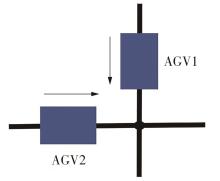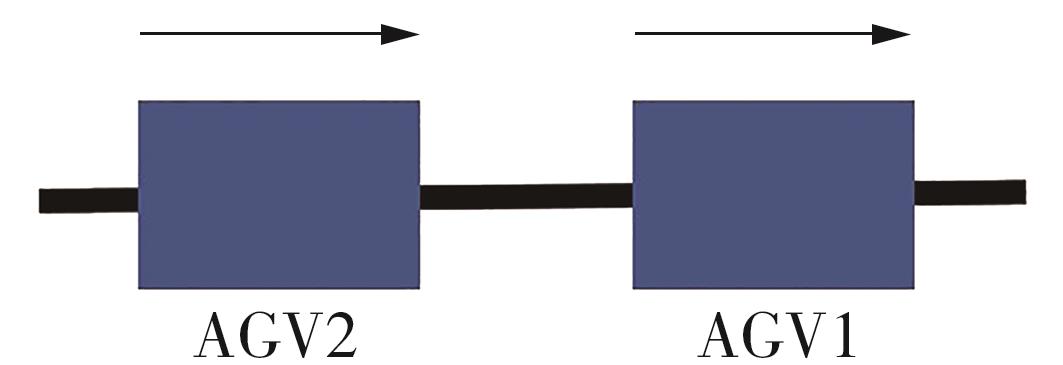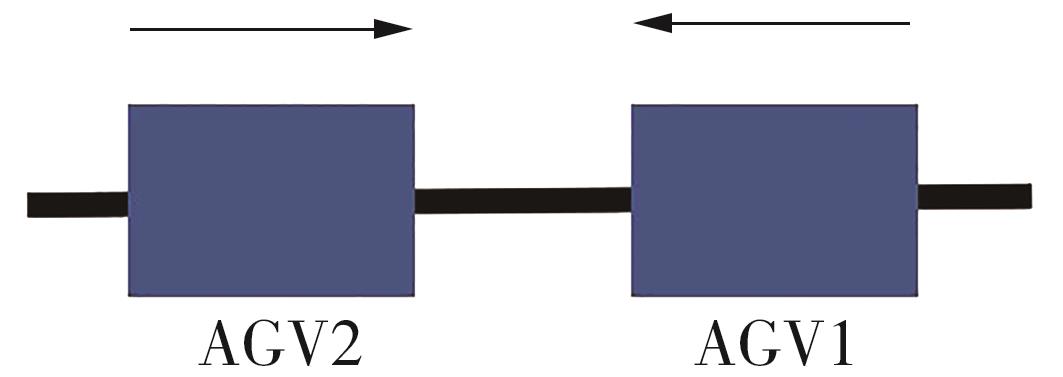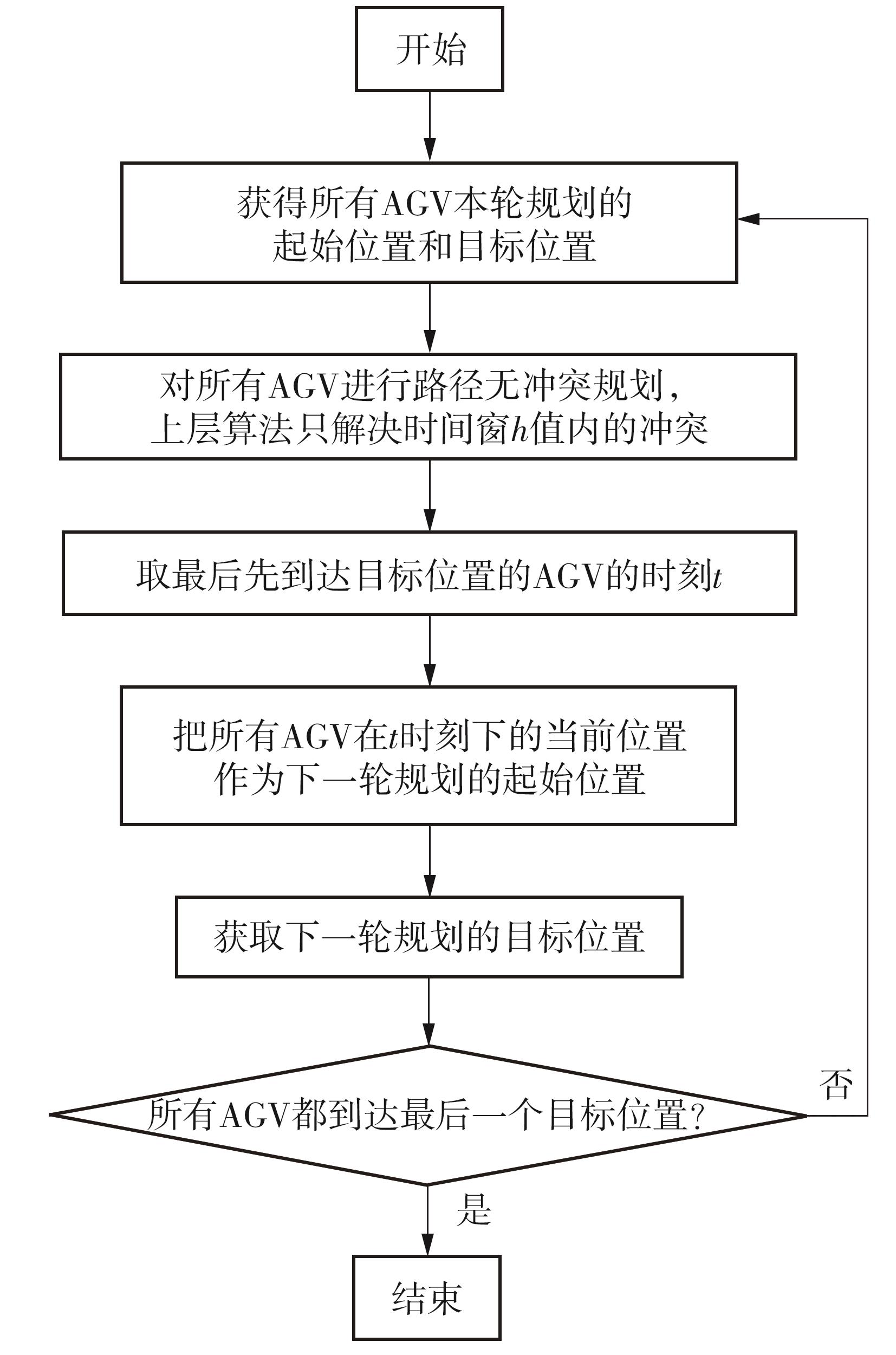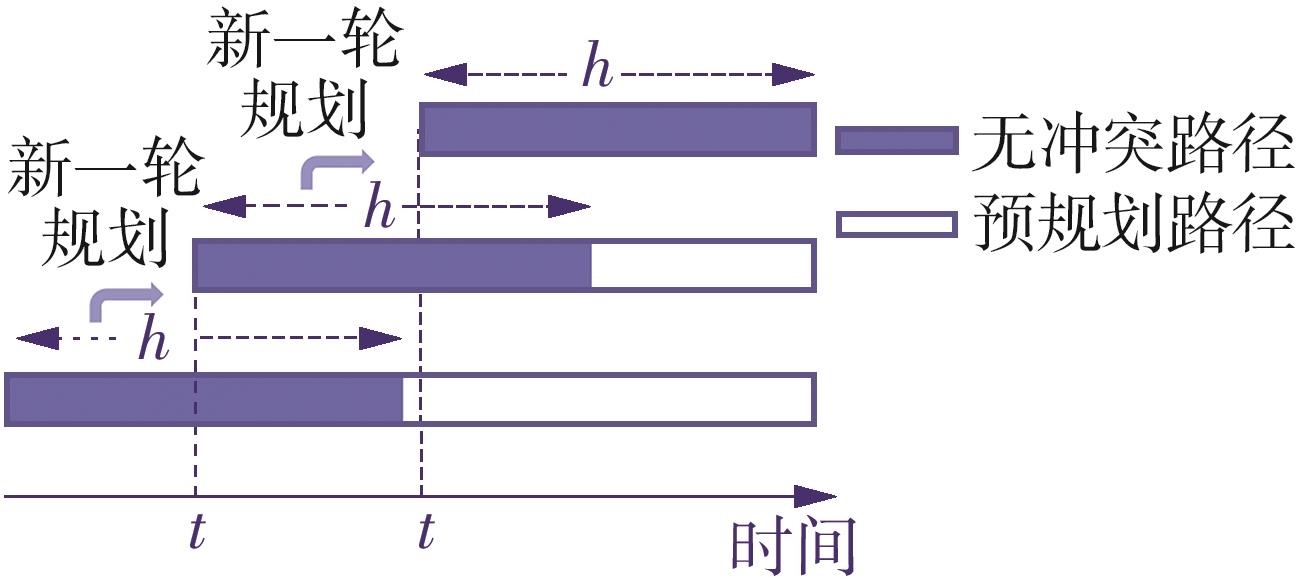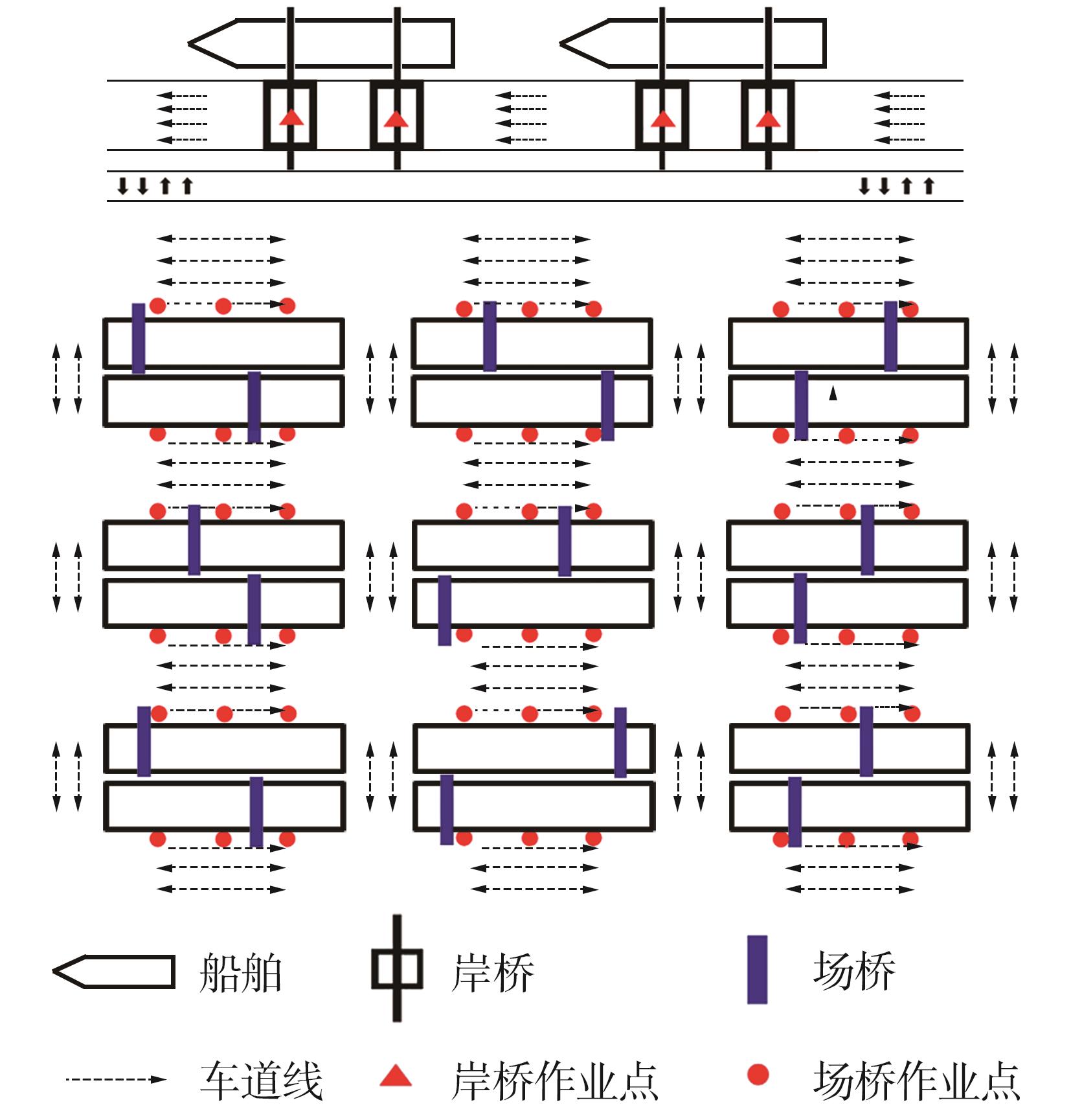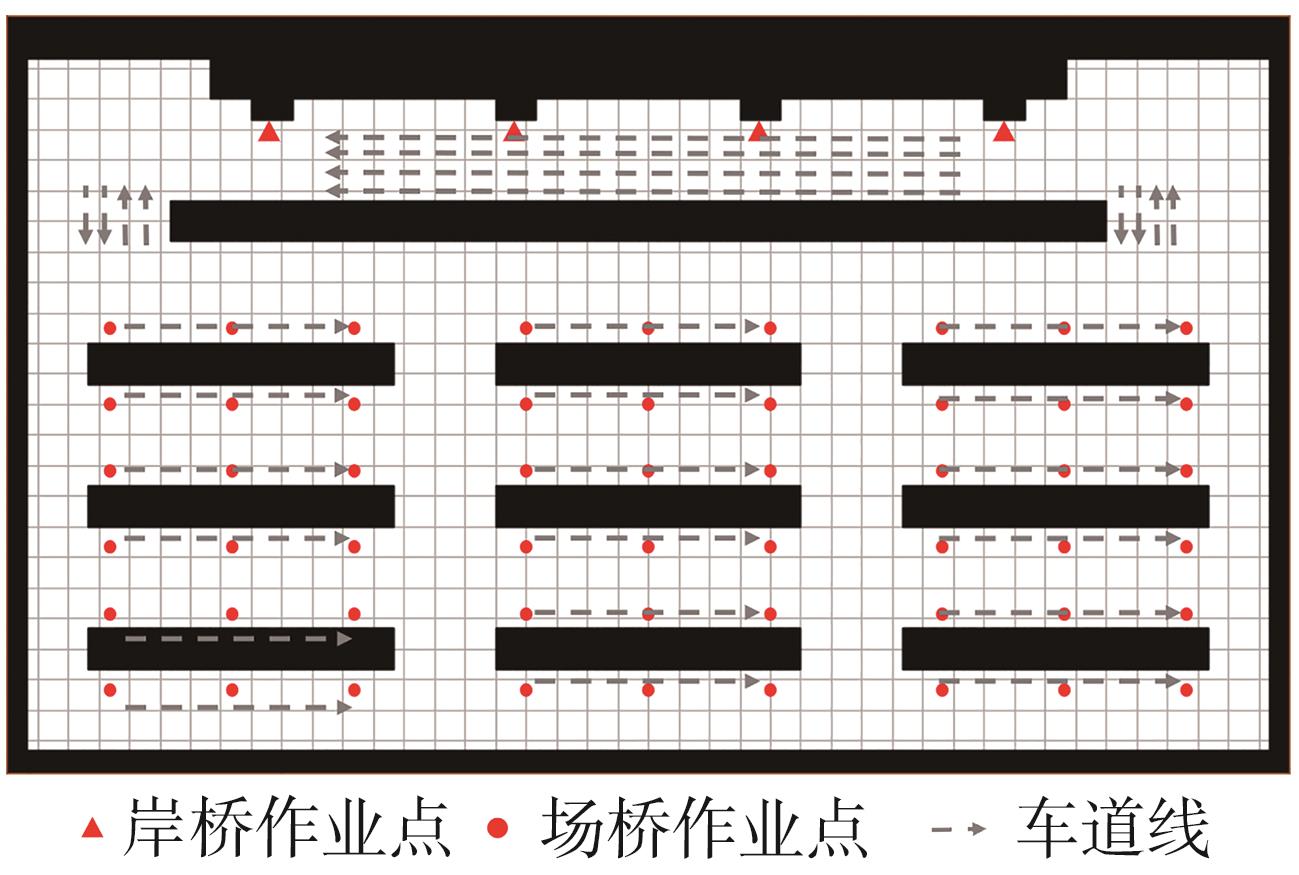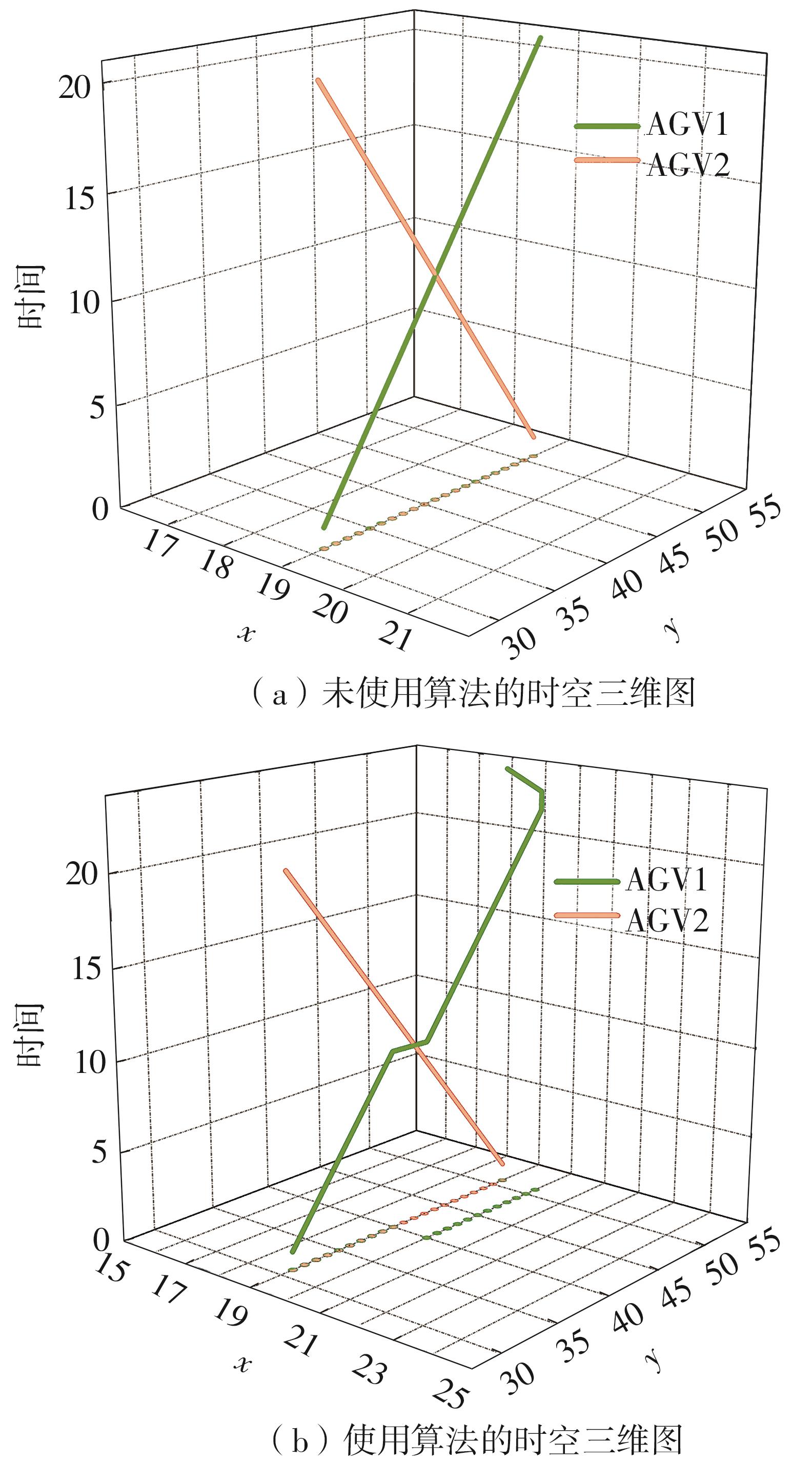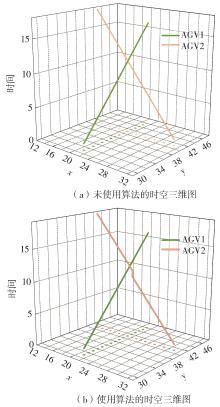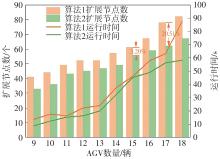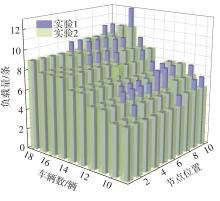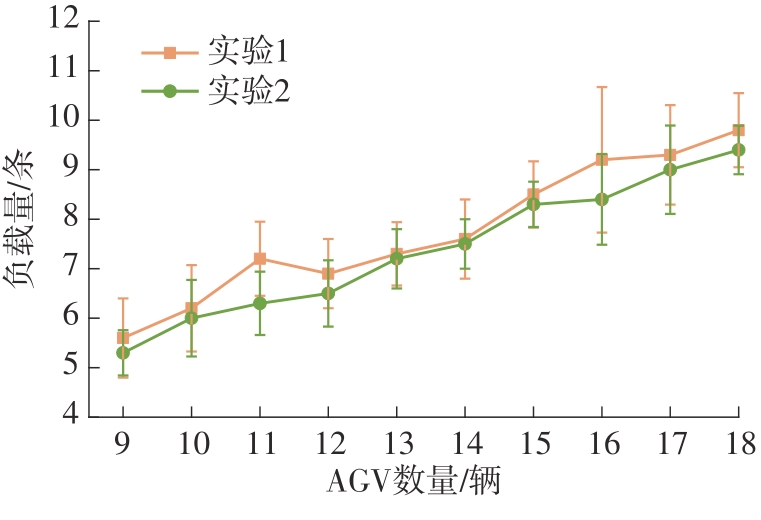Journal of South China University of Technology(Natural Science Edition) ›› 2023, Vol. 51 ›› Issue (10): 1-10.doi: 10.12141/j.issn.1000-565X.230227
Special Issue: 2023绿色智慧交通系统专辑
• Green, Intelligent Traffic System • Previous Articles Next Articles
Conflict-Free Path Planning For Multi-AGVs in Automated Terminals Considering Road Load Balancing
WEN Huiying YUAN Yuqing LIN Yifeng
- South China University of Technology,School of Civil Engineering & Transportation,Guangzhou 510640,Guangdong,China
-
Received:2023-04-11Online:2023-10-25Published:2023-05-29 -
About author:温惠英(1965-),女,博士,教授,主要从事交通安全、物流规划与管理研究。E-mail:hywen@scut.edu.cn -
Supported by:the Natural Science Foundation of Guangdong Province(2023A1515011322)
CLC Number:
Cite this article
WEN Huiying, YUAN Yuqing, LIN Yifeng. Conflict-Free Path Planning For Multi-AGVs in Automated Terminals Considering Road Load Balancing[J]. Journal of South China University of Technology(Natural Science Edition), 2023, 51(10): 1-10.
share this article
| 1 | XIE S T, HU J Y, BHOWMICK P,et al .Distributed motion planning for safe autonomous vehicle overtaking via artificial potential field[J].IEEE Transactions on Intelligent Transportation Systems,2022,23(11):21531-21547. |
| 2 | HUANG Y, DING H, ZHANG Y,et al .A motion planning and tracking framework for autonomous vehicles based on artificial potential field elaborated resistance network approach[J].IEEE Transactions on Industrial Electronics,2019,67(2):1376-1386. |
| 3 | AZZABI A, NOURI K .An advanced potential field method proposed for mobile robot path planning[J].Transactions of the Institute of Measurement and Control,2019,41(11):3132-3144. |
| 4 | LIYUN X, NING W, XUFENG L .Study on conflict-free AGVs path planning strategy for workshop material distribution systems[J].Procedia CIRP,2021,104:1071-1076. |
| 5 | ZHONG M, YANG Y, DESSOUKY Y,et al .Multi-AGV scheduling for conflict-free path planning in automated container terminals[J].Computers & Industrial Engineering,2020,142:106371. |
| 6 | ZHOU Y, HUANG N .Airport AGV path optimization model based on ant colony algorithm to optimize Dijkstra algorithm in urban systems[J].Sustainable Computing:Informatics and Systems,2022,35:100716. |
| 7 | 许伦辉,曹宇超,林培群 .基于多影响因素RDMA~*算法的无人驾驶动态路径规划[J].交通信息与安全,2020,38(2):24-36. |
| XU Lunhui, CAO Yuchao, LIN Peiqun. Dynamic path planning for unmanned driving based on multi-influencing factors RDMA* algorithm[J].Journal of Transport Information and Safety,2020,38(2):24-36. | |
| 8 | WU M P, GAO J, LI L,et al .Control optimisation of automated guided vehicles in container terminal based on Petri network and dynamic path planning[J].Computers & Electrical Engineering,2022,104:108471. |
| 9 | YUE L, FAN H .Dynamic scheduling and path planning of automated guided vehicles in automatic container terminal[J].IEEE/CAA Journal of Automatica Sinica,2022,9(11):2005-2019. |
| 10 | 左秀峰,沈万杰 .基于Floyd算法的多重最短路问题的改进算法[J].计算机科学,2017,44(5):232-234,267. |
| ZUO Xiufeng, SHEN Wanjie .Improved algorithm about muti-shortest path problem based on floyd algorithm[J].Computer Science,2017,44(5):232-234,267. | |
| 11 | SINGGIH I K, HONG S, KIM K H .Flow path design for automated transport systems in container terminals considering traffic congestion [J].Industrial Engineering & Management Systems,2016,15(1):19-31. |
| 12 | MARTIN J, CASQUERO O, FORTES B,et al .A generic multi-layer architecture based on ROS-JADE integration for autonomous transport vehicles[J].Sensors,2018,19(1):69. |
| 13 | 高一鹭,胡志华 .基于时空网络的自动化集装箱码头自动化导引车路径规划[J].计算机应用,2020,40(7):2155-2163. |
| GAO Yilu, HU Zhihua .Path planning for automated guided vehicles based on tempo-spatial network at automated container terminal[J].Journal of Computer Applications,2020,40(7):2155-2163. | |
| 14 | LI Q, POGROMSKY A, ADRIAANSEN T,et al .A control of collision and deadlock avoidance for automated guided vehicles with a fault-tolerance capability[J].International Journal of Advanced Robotic Systems,2016,13(2):64. |
| 15 | 张素云,杨勇生,梁承姬,等 .自动化码头多AGV路径冲突的优化控制研究[J].交通运输系统工程与信息,2017,17(2):83-89. |
| ZHANG Suyun, YANG Yongsheng, LIANG Chengji,et al .Optimal control of multiple AGV path conflict in automated terminals[J].Journal of Transportation Systems Engineering and Information Technology,2017,17(2):83-89. | |
| 16 | 张中伟,张博晖,代争争,等 .基于动态优先级策略的多AGV无冲突路径规划[J].计算机应用研究,2021,38(7):2108-2111. |
| ZHANG Zhongwei, ZHANG Bohui, DAI Zhengzheng, et al. RMulti-AGV conflict-free path planning based on dynamic priority strategy [J]. Application Research of Computers,2021,38(7):2108-2111. | |
| 17 | LIANG C, ZHANG Y, DONG L. A three stage optimal scheduling algorithm for AGV route planning considering collision avoidance under speed control strategy[J].Mathematics,2022,11(1):138. |
| 18 | SMOLIC-ROCAK N, BOGDAN S, KOVACIC Z,et al .Time windows based dynamic routing in multi-AGV systems[J].IEEE Transactions on Automation Science and Engineering,2010,7(1):151-155. |
| 19 | 万千 .基于CBS算法的物流分拣多AGV路径规划的研究[D].哈尔滨:哈尔滨工业大学,2018. |
| 20 | GUO K, ZHU J, SHEN L .An improved acceleration method based on multi-agent system for AGVs conflict-free path planning in automated terminals[J].IEEE Access,2020,9:3326-3338 |
| 21 | 李静 .基于在线学习的自动化码头AGV调度方法研究[D].大连:大连理工大学,2018. |
| 22 | SHARON G, STERN R, GOLDENBERG M,et al .The increasing cost tree search for optimal multi-agent pathfinding[J].Artificial Intelligence,2013,195:470-495. |
| 23 | SHARON G, STERN R, FELNER A,et al .Conflict-based search for optimal multi-agent pathfinding[J].Artificial Intelligence,2015,219:40-66. |
| 24 | MA H, LI J Y, KUMAR T K S,et al .Lifelong multi-agent path finding for online pickup and delivery tasks [C]∥Proceedings of the 16th International Conference on Autonomous Agents and Multiagent Systems (AAMAS).Sao Paulo:ACM,2017:837-845 |
| 25 | HU Y, YANG H, HUANG Y .Conflict-free scheduling of large-scale multi-load AGVs in material transportation network[J].Transportation Research Part E:Logistics and Transportation Review,2022,158:102623. |
| 26 | 刘恒麟 .多AGV路径规划算法的研究与实现[D].南京:东南大学,2020. |
| [1] | ZHUANG Ling, LIU Yuhang. Research on Transmission Scheme Based on Reconfigurable Intelligent Surface in Dense Urban Agglomeration [J]. Journal of South China University of Technology(Natural Science Edition), 2024, 52(3): 112-118. |
| [2] | YAO Daojin, YIN Xiong, LUO Zhen, et al.. AGVS Path Planning Agorithm in Complex Environments [J]. Journal of South China University of Technology(Natural Science Edition), 2023, 51(11): 56-62. |
| [3] | CHEN Peng, JIANG Yongqi, YU Tianwei, et al. Quadrotor Trajectory Planning Method Based on Local Soft-Constrained Optimization [J]. Journal of South China University of Technology(Natural Science Edition), 2022, 50(6): 27-36. |
| [4] | WEI Wu, HAN Jin, LI Yanjie, et al. Path Planning of Mobile Robots Based on Dual-Tree Quick-RRT* Algorithm [J]. Journal of South China University of Technology (Natural Science Edition), 2021, 49(7): 51-58. |
| [5] | WEN Huiying, LIN Yifeng, WU Haoshu, et al. Extended Co-evolutionary Algorithm for Path Planning Based on the Urban Traffic Environment Evolution [J]. Journal of South China University of Technology (Natural Science Edition), 2021, 49(10): 1-10. |
| [6] | ZHANG Jiaxu, YANG Xiong, SHI Zhengtang, et al. Path Planning and Tracking Control for Emergency Lane Change and Obstacle Avoidance of Vehicles [J]. Journal of South China University of Technology (Natural Science Edition), 2020, 48(9): 86-93,106. |
| [7] | ZHAO Xing JI Kang LIN Hao XU Peng. Resource Allocation Model Based on Multi-objective Path Planning in Emergency Management [J]. Journal of South China University of Technology(Natural Science Edition), 2019, 47(4): 76-82. |
| [8] | HONG Xiaobin WEI Xinyong HUANG Yesheng LIU Yanxia XIAO Guoquan. Local Path Planning Method for Unmanned Surface Vehicle Based on Image Recognition and VFH + [J]. Journal of South China University of Technology(Natural Science Edition), 2019, 47(10): 24-33. |
| [9] | PAN Xiao-fang ZHOU Shun-ping YANG Lin WAN Bo. Origin Destination Constraint Experience Model of Taxi and Path Planning [J]. Journal of South China University of Technology (Natural Science Edition), 2017, 45(8): 57-64,83. |
| [10] | WU Yu-xiang WANG Chao. An Improved Three-Dimensional Path Planning Method of Mobile Robot [J]. Journal of South China University of Technology (Natural Science Edition), 2016, 44(9): 53-60. |
| [11] | Huang Miao- na Feng Sui- li Chen Jun Zhang Yong- zhong . Strategy of Avoiding Conflict Between MRO and MLB in LTE Self- Optimizing Networks [J]. Journal of South China University of Technology (Natural Science Edition), 2013, 41(11): 36-42. |
| [12] | Wang Fu-yuan Xu Jia-wen. Process and Key Technologies of NC Electrochemical Machining of Integral Impeller via Fractional-Step Method [J]. Journal of South China University of Technology (Natural Science Edition), 2010, 38(8): 72-77. |
| [13] | Zhao Dong Zheng Shi-xiong. Multi-Robot Collision Avoidance Algorithm Based on Generalized Potential Field [J]. Journal of South China University of Technology (Natural Science Edition), 2010, 38(1): 124-127. |
| [14] | Chen Huazhi Xie Cunxi Zeng Dehuai. Simulation of a Neural Network-based Path Planning Algorithm for Mobile Robot [J]. Journal of South China University of Technology(Natural Science Edition), 2003, 31(6): 56-59. |
| Viewed | ||||||
|
Full text |
|
|||||
|
Abstract |
|
|||||
